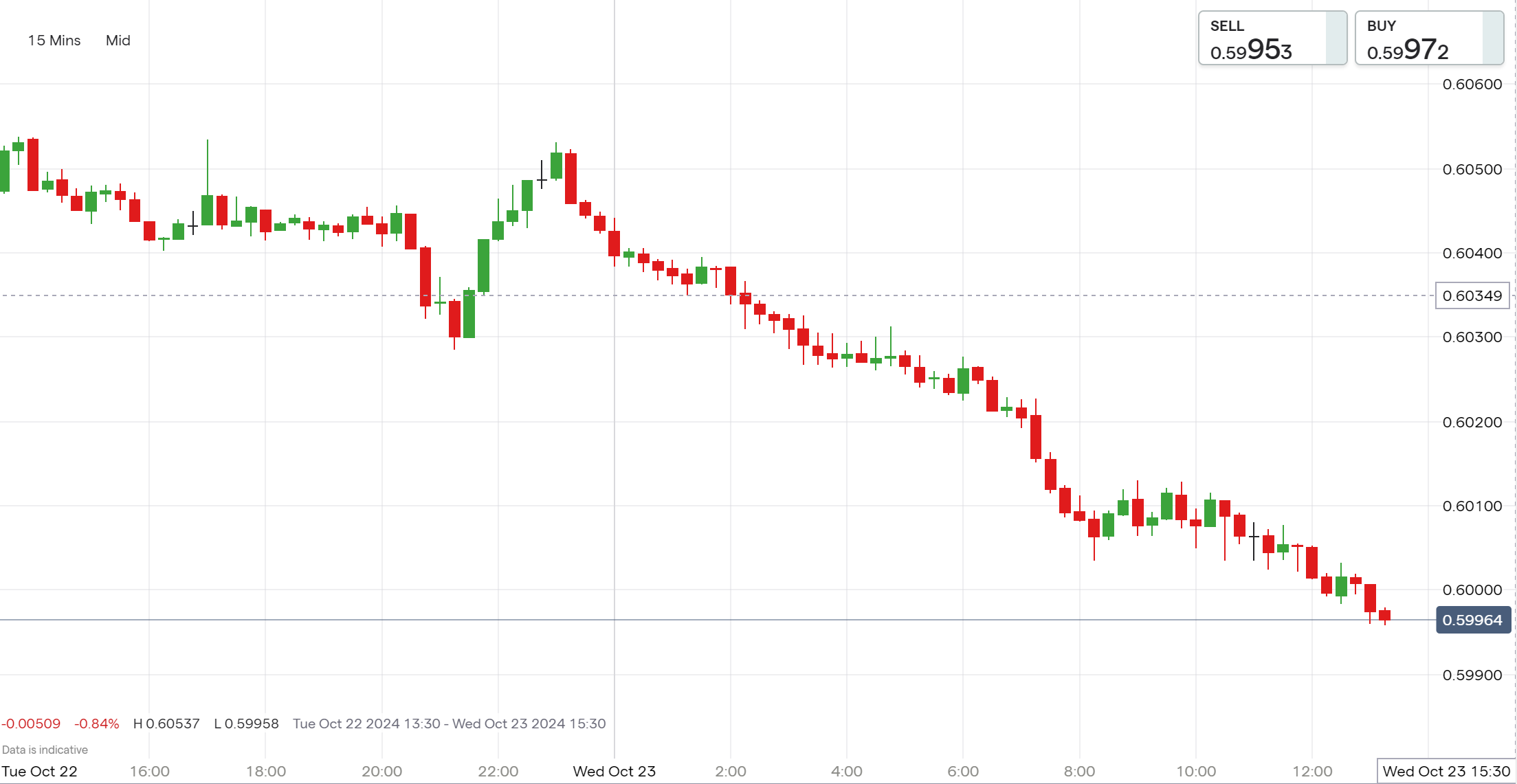Commodity currency watch: AUD/USD and NZD/USD impacted by falling gold and silver prices
Explore how falling gold and silver prices are impacting AUD/USD and NZD/USD, as traders assess US interest rates and potential Fed actions that could influence commodity currency trajectories.

Key points
- AUD/USD drops over 50 pips, trading below 0.6650
- NZD/USD approaches 0.6000 after a challenging October
- Gold falls $30, silver down $1.20, impacting currencies
- Commodity currencies under pressure from US rates
- Potential Fed cuts could boost Aussie and Kiwi
AUD/USD Trades Under 0.6650 as Gold Prices Fall
The AUD/USD pair experienced a significant drop, falling more than 50 pips intraday as gold prices declined by $30, or -1.1%, and silver prices decreased by $1.20, or -3.3%, on Wednesday afternoon. This movement places the Australian dollar over 300 pips below its September highs above 0.6900, with the currency now approaching 0.6600 for the first time since mid-August. As a commodity currency, the Aussie is influenced by changes in gold and silver prices, reflecting broader market dynamics affecting its valuation against the US dollar.
AUD/USD price history

NZD/USD Nears Important 0.6000 Level
The New Zealand dollar also faced downward pressure in tandem with falling commodity prices on Wednesday, culminating in a challenging October for the Kiwi. The NZD/USD pair, which traded above 0.6350 at the end of September, is now testing the crucial 0.6000 level. While it has dipped below this threshold in 2024, the breach has been marginal. Traders keenly watch to see if 0.6000 will hold or if further declines are imminent as the month progresses.
NZD/USD price history

Gold and Silver Prices Crash Back Below $2,750 and $34.00
After a robust start to October, where gold surged over $100 and silver more than $3.00, precious metals retraced about a third of their monthly gains on Wednesday. This volatility notably impacts the Australian and New Zealand dollars, often termed commodity currencies due to their positive correlation with precious metals prices.
Where Next for AUD/USD, NZD/USD?
Both the AUD/USD and NZD/USD pairs are nearing multi-month lows, although they've reached lower levels earlier in 2024. The future of these commodity currencies hinges on US interest rate trajectories; stronger rates could bolster the US dollar, pressuring the Aussie and Kiwi further. Conversely, if US economic data weakens and the Federal Reserve enacts more significant cuts than anticipated at the November FOMC meeting, there could be a resurgence in metals prices and a potential bounce-back for both the Australian and New Zealand dollars.
How to trade US dollar
- Open an account to get started, or practice on a demo account
- Choose your forex trading platform
- Open, monitor, and close positions on USD pairs
Trading forex requires an account with a forex provider like tastyfx. Many traders also watch major forex pairs like EUR/USD and USD/JPY for potential opportunities based on economic events such as inflation releases or interest rate decisions. Economic events can produce more volatility for forex pairs, which can mean greater potential profits and losses as risks can increase at these times.
You can help develop your forex trading strategies using resources like tastyfx’s YouTube channel. Our curated playlists can help you stay up to date on current markets and understanding key terms. Once your strategy is developed, you can follow the above steps to opening an account and getting started trading forex.
Your profit or loss is calculated according to your full position size. Leverage will magnify both your profits and losses. It’s important to manage your risks carefully as losses can exceed your deposit. Ensure you understand the risks and benefits associated with trading leveraged products before you start trading with them. Trade using money you’re comfortable losing. Past performance is not indicative of future results.
